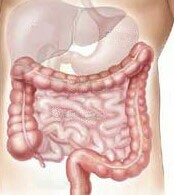- Skip Storing This Everyday Product in the Fridge Door
- Green Tea + B3 Pairing May Boost Brain Health
- Navigating Your Midlife Crisis: Embracing New Possibilities
- City Raccoons Showing Signs of Domestication
- Mapping the Exposome: Science Broadens Focus to Environmental Disease Triggers
- One Week Less on Social Media Linked to Better Mental Health
- Your Brain Changes in Stages as You Age, Study Finds
- Some Suicide Victims Show No Typical Warning Signs, Study Finds
- ByHeart Formula Faces Lawsuits After Babies Sickened With Botulism
- Switch to Vegan Diet Could Cut Your Greenhouse Gas Emissions in Half
For Endoscopes Tied to Serious Infections, Current Cleaning Methods Not Enough


Recent outbreaks of dangerous infections tied to endoscopic devices called duodenoscopes have grabbed headlines, and in March the U.S. Food and Drug Administration issued strict guidelines on how best to disinfect the devices.
On Tuesday, the FDA announced extra cleaning measures for the devices, which are used to examine the interior of the digestive tract.
But a new study finds that 100-percent disinfection may simply not be possible under the recommended protocols. Even after what seems to be a thorough cleaning and disinfection, potentially harmful bacteria can survive on endoscopes, researchers reported.
“Colonoscopes and gastroscopes can harbor residual organic material, including viable microbes, even when adherence with recommended reprocessing guidelines is verified,” concluded a team led by Cori Ofstead, of Ofstead & Associates in St. Paul, Minn.
In the study, the researchers examined 15 colonoscopes and gastroscopes used in gastrointestinal procedures after they underwent each step of recommended cleaning guidelines between their use in different patients.
Those steps included: bedside cleaning; manual cleaning in dedicated reprocessing rooms; and automated cleaning with a high-level disinfectant. The scopes were stored vertically after drying with isopropyl alcohol and forced air.
If contamination levels exceeded pre-determined targets for each cleaning step, the cleaning procedure was repeated and the scope retested, the researchers said.
Surviving microbes were found on 92 percent of the devices after bedside cleaning, 46 percent after manual cleaning, 64 percent after high-level disinfection, and 9 percent after overnight storage, the findings showed.
Residual contamination above target levels was found on 100 percent of the devices after bedside cleaning, 92 percent after manual cleaning, 73 percent after high-level disinfection, and 82 percent after overnight storage, the researchers said.
The researchers do hold out hope that other methods might get hospitals closer to complete disinfection, however.
“More research is needed to identify processes that can ensure all flexible endoscopes are free of residual contamination and viable microbes prior to patient use,” the study authors said. “Results from this study suggest that current standards and practices may not be sufficient for detecting and removing residual contamination.”
The study appears in the August issue of the American Journal of Infection Control.
More information
The U.S. National Institute of Diabetes and Digestive and Kidney Diseases has more about colonoscopy.
Source: HealthDay
Copyright © 2025 HealthDay. All rights reserved.










